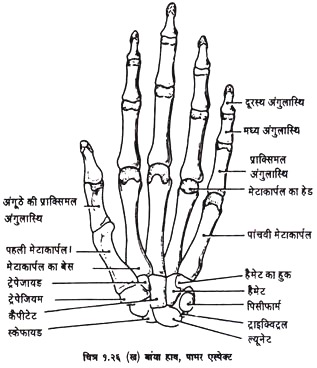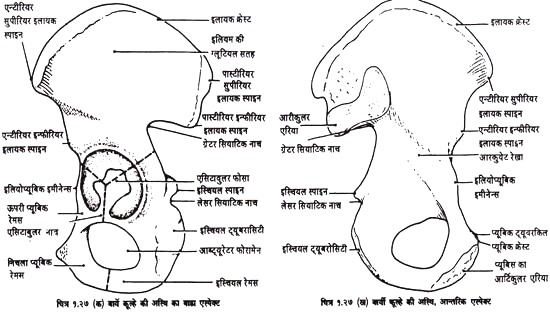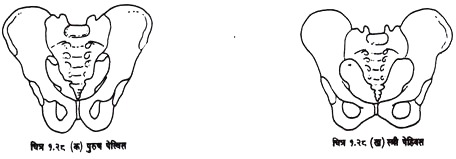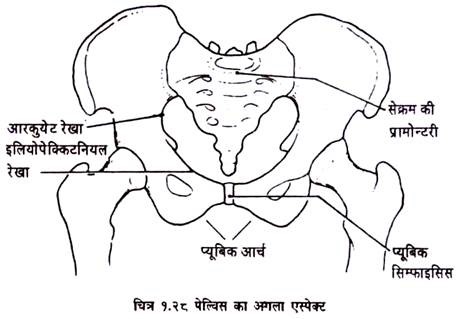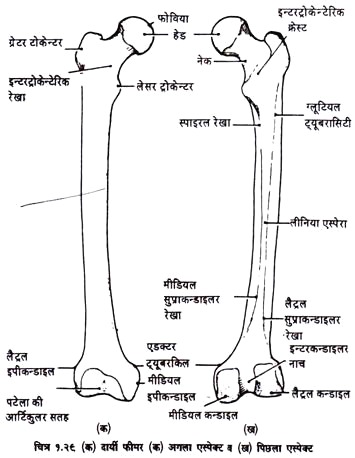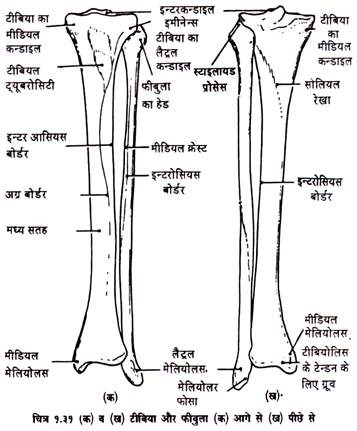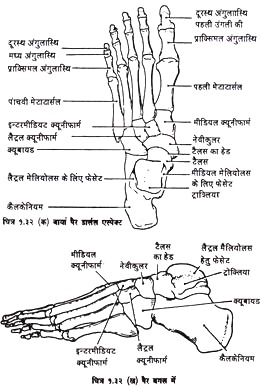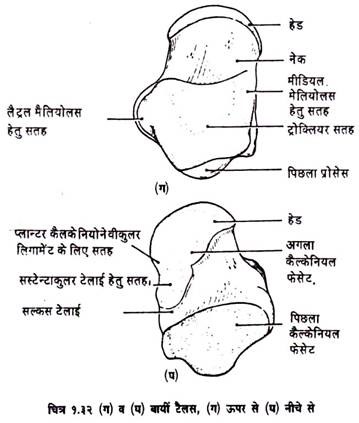Read this article to learn about:- 1. Meaning and Objectives of an Average 2. Types of Average 3. Which Average is best in the Measure of Central Tendency?
Meaning and Objectives of an Average:
An average is a value which represents the entire data in a series by one figure. It has much significance because it represents the features of the whole group. It is also known as measure of central tendency because its value lies somewhere between two extreme values. An average is found by adding all numbers together and dividing the total by the sum of the numbers.
Objectives:
An average has the following objectives:
(i) The main aim of average is to represent a large amount of data in a simple and systematic manner. In other words, it converts unorganised and complex data into organised and simple data.
(ii) It makes comparison easy because it represents the data very briefly; that is, it represents the data just by a single figure which can be compared easily.
(iii) It gives a bird’s-eye view of the entire data. Because of this, it is very useful in policy-making.
(iv) It provides a suitable and reliable basis for statistical analysis.
(v) It is universal in nature and therefore finds application in many fields.
(vi) It is mostly used in statistics for the simplification of the data.
Types of Average:
An average is a single figure that represents the whole data.
There are various kinds of averages and these are outlined below:
Mathematical Averages:
(i) Arithmetic mean (AM)
(a) Simple arithmetic mean
(b) Weighted arithmetic mean
(ii) Geometric mean (GM)
(iii) Harmonic mean (HM)
Positional Averages:
(a) Median
(b) Mode
(i) Arithmetic Mean:
Arithmetic mean is defined as the sum of the items divided by the number of items in a series. Thus, if a sample consists of five invoices with a value of Rs.2, Rs.5, Rs.12, Rs.14 and Rs.17, the arithmetic mean would be their total (Rs.50) divided by their numbers (5), that is Rs.10. Arithmetic mean is the most widely used and practical method for the measurement of central tendency.
It is further divided into two types:
(a) Simple arithmetic mean, and
(b) Weighted arithmetic mean,
(a) Simple Arithmetic Mean:
Simple arithmetic mean is defined as the simple mean, i.e., total of all the items by number of items it can be shown through the following methods:
Individual Series:
Direct Method:
In individual series, the following formula is used:
If x1, x2…. xn is a set of n observation in a random sample
X̅ = Xi/n
X̅ = arithmetic mean
∑xi= total of the items in a series
n = number of items
Example 1:
Find the mean X: 10 15 12 9 6 8
X̅ = ∑X/N
=10+15+12+9+6+8/6 =60/6=10
Indirect Method:
The indirect method is used when the number of items is very large and to simplify that data, we take the deviations from the assumed mean.
The following formula will be used for it:
(i) Short Cut Method:
Example 2:
(i) X: 10 15 12 9 6 8
(ii) Step Deviation Method:
Example 2 (ii):
X: 150 120 140 190 170
Discrete/Continuous Series Direct method:
If x1, x2…….xn……..occur with respective frequencies f1 ,f2, f3,…..fn the Arithmetic Mean
where,
X = Arithmetic mean
fi = frequencies
xi → variable or mid points of class interval frequency
N = Total Number of frequencies in the series.
Example 3:
X̅ = 2460/60 =41.
Short Cut Method:
X̅ = A+∑fd/N
where,
X- Arithmetic mean.
d – Deviations as (X- A).
∑fd = Sum of product of d with their respective frequencies.
N = Number of frequencies in the series.
A = Assumed mean.
Example 4:
Calculate mean under short-cut method and step deviation method of the above statement.
Solution:
Inclusive Series:
Different between upper limit of interval and lower limit of next interval is noted; then half of that difference is deducted from lower limit of every interval and the same is added to upper limit of every interval.
Example 5:
Note:
‘m’ is mid-point of class interval and treated as V.
Open-End Intervals:
Open-end classes are those in which lower limit of the first class and the upper limit of the last class are not known. In such a case, we cannot find out the arithmetic mean unless we make an assume about the unknown limits. The assumption would naturally depend upon the class interval.
Cumulative Series:
In this series, the class interval is given below and above and frequency is given in the ascending and descending order.
Unequal Intervals:
If class intervals are not equal, make class-intervals equally, then solve the problem.
Example 6:
Solution:
First, calculate the class intervals equal, the class intervals must be minimum 5 and maximum 12 or 13.
So now,
Example 7:
Calculate average income from the following data:
Solution:
As no common factor can be taken, direct method will be applied.
Properties of the Arithmetic Mean:
Arithmetic mean has following properties as given below:
1. The sum of deviations of the items taken from arithmetic mean is always zero.
∑ (X- X̅) = 0
2. The sum of the squared deviations of the items from arithmetic mean is less than the deviations taken from the assumed mean.
∑(X- X̅) 2 < ∑ (X-A)2
3. When we have given the data of more than two groups that is, X̅1, X̅2, N2 and N1 then we can calculate the combined mean by the formula- X̅12 = N1 X̅ 1 +N2 X̅2N2/ N1+N2
4. Arithmetic mean depends upon the change of scale of data and if it is divided or multiplied by constant value it will be affected accordingly.
5. Arithmetic mean is independent of change of origin whether we change the value of assumed mean or not the value of arithmetic mean will be the same.
6. The product of number of items and arithmetic mean will be equal to total number of all given values.
X̅ = ∑X/N or ∑X = X̅N
7. If we replace the actual mean with the original series then total of the items will not change.
Correction of Incorrect Values of Mean:
Generally, there may be possibilities that some incorrect values may be taken at the time of calculation inadvertently. So, there is a need to calculate the correct arithmetic mean.
This can be calculated through following method:
1. First, find out the values of incorrect ∑X, that is X̅= ∑X/N
Or
Incorrect ∑X = NX̅
2. Then, deduct the wrong values and add the right ones in the incorrect ∑x to calculate the correct ∑X
∑X (corrected) = ∑X (incorrect) + correct items – incorrect items.
3. Finally, calculate the corrected X̅ by applying the formula = corrected ∑X/N
Example 8:
X= 15, N- 25, wrong item = 7, Correct item = 9
Solution:
Example 9:
The mean wage of 100 workers per day was found to be Rs. 80 but later on it was found that the wages of two labourers, Rs.93 and Rs.59, were misread as Rs. 39 and Rs. 95, respectively. Find the correct mean wage per day.
Solution:
Example 10:
The following table shows the frequency distribution of marks obtained by students in Economics:
On scrutiny the following mistakes in calculation were revealed:
Revise the frequency table and calculate the mean.
Solution:
Combined Arithmetic Mean:
Combined arithmetic mean is calculated where the data of more than one group is given in question.
It can be calculated from the following formula:
Where,
X̅12 = Combined mean of two groups
X̅1= Arithmetic mean of group 1st
X̅2 = Arithmetic mean of group 2nd
N1 = No. of item in first group
N2 = No. of item in second group and so on
Example 11:
X̅1= 7, X̅2 =10, X̅3 = 12
N1= 15,N2 = 10, N3 = 20
Find X̅123.
Solution:
X̅123 = 15×7+10×10+20×12/15+10+20
= 445/45= 9.89
Example 12:
Hundred students took a test. The result of those who secured less than 60% marks is given as:
If the average marks of the students were 50, find out the average marks for those who secured 60% or more marks.
Solution:
Let N denote the students who secured less than 60% and N2 the students who secured 60% or more marks.
Also, combined average X̅12 = 50 marks
Total number of students = N1 +N2 = 100
∴ Number of students N2 who got 60% or more marks = 20
Let average marks of those who secured 60% or more marks be X̅2
∴ Mean marks of students who secured or more than 60% marks = 106.
Missing Frequency:
In the central tendency, if one value of frequency is missing then minimum one value of average is given. For example, X̅ or Me or Mode and total number are not given. But if two or more than two values of frequency are missing then one or more than one average are given and total number is also given.
Example 13:
Calculate missing frequency if X̅=28 and assumed mean =25 from the following data:
Calculate Mean with the Help of Tally Bar:
If the data is given for a particular item we first measure the tally bar. In this situation make minimum 5 class interval and maximum 12 or 13.
Example 14:
In the B. Com. Class, marks scored by 25 students in Statistics are as follows. Out of 58, find the average of marks in Statistics class for B.Com:
Solution:
In the above there are 25 students, the minimum marks is 3 and maximum is 47, the class intervals are 0-5, 5-10, 10-15……
(b) Weighted Arithmetic Mean:
Weighted arithmetic mean is defined as the calculation of arithmetic mean by assigning the weights to different items in a series differently according to their relative importance.
It can be calculated from following formula:
X̅w ∑WX/∑W
Where,
X̅w = weighted arithmetic, mean.
W = weighed assigned to different items differently.
∑WX = sum of product of items with their respective weights.
∑W = sum of weights.
(1) First of all find out the product of items with their respective weights, that is, WX.
(2) Take the total of WX as ∑WX.
(3) Divide the value of ∑WX by ∑W to get the values of weighted arithmetic mean.
Example 15:
A train runs 25 km at a speed of 30 km per hour and another 50 km at a speed of 40 km per hr. Due to repairs of the track it travels at a speed 10 kmph for 6 minutes, and finally covers the remaining distance of 24 km at a speed of 24 kmph. What is the average speed in kmph?
Solution:
Time taken in covering 25 km at a speed of 30 kmph = 50 minutes and so on. Therefore, taking the time taken as weights.
Average speed = ∑WX/∑X= 6000/191 = 31.41 kmph.
Example 16:
From the results of the colleges X and F, state which of them is better and why:
Solution:
Weighted Average Mean for college A.
Weighted average mean of College A
X̅W =∑W1 X1 /∑W1= 294990/4000 =73.78
Weighted average mean of College B.
Weighted average mean of College B = ∑W2 X2 /∑W2= 295004/4000= 73.751
Average pass percentage of college B > college A, so College B is better.
Merits and Demerits of Arithmetic Means:
Merits:
1. It is simple to understand and easy to calculate.
2. It is rigid in nature.
3. It includes all the items in calculation.
4. It has further applicability for mathematical treatment.
5. It is universal in nature.
Demerits:
1. It cannot be represented graphically.
2. It is not suitable in open-ended classes.
3. It is useful only in the normal distribution, but fails to serve the purpose in U-shaped distribution.
4. It is mean effected by extreme values.
Which Average is best in the Measure of Central Tendency?
The measure of central tendency has many measures to measure average of the given data. Out of them some are mathematical but some are positional averages. Which one is best from all of them is a very difficult question because each average has its own merits and demerits.
The brief description of all these averages is given as below to find out the best one from them:
1. Arithmetic Mean:
Arithmetic mean is mathematical average. It is a generally used average because it includes all the items in a series. But its main limitations are that it cannot be represented graphically and it is not suitable for open-end classes.
2. Geometric Mean:
It is the most suitable average where there is a large dispersion of the data. It is the best method to calculate the value in percentages, proportions and compound numbers. But it takes the log value for its calculation which makes it difficult than other mathematical averages like arithmetic mean and harmonic mean and its graphic presentation is also impossible.
3. Harmonic Mean:
This method is mostly used when we have to find out the data quantitatively, that is, time, speed rate, prices and so on. But it has no practical use.
4. Median and other Partial Values:
Median and other partial values, that is, quartiles, percentile all are positional averages. These averages prove helpful to find out the qualitative information about the given data. These can be shown graphically. But their main limitation is that these averages do not include all the values given in a series which affect their reliability.



























